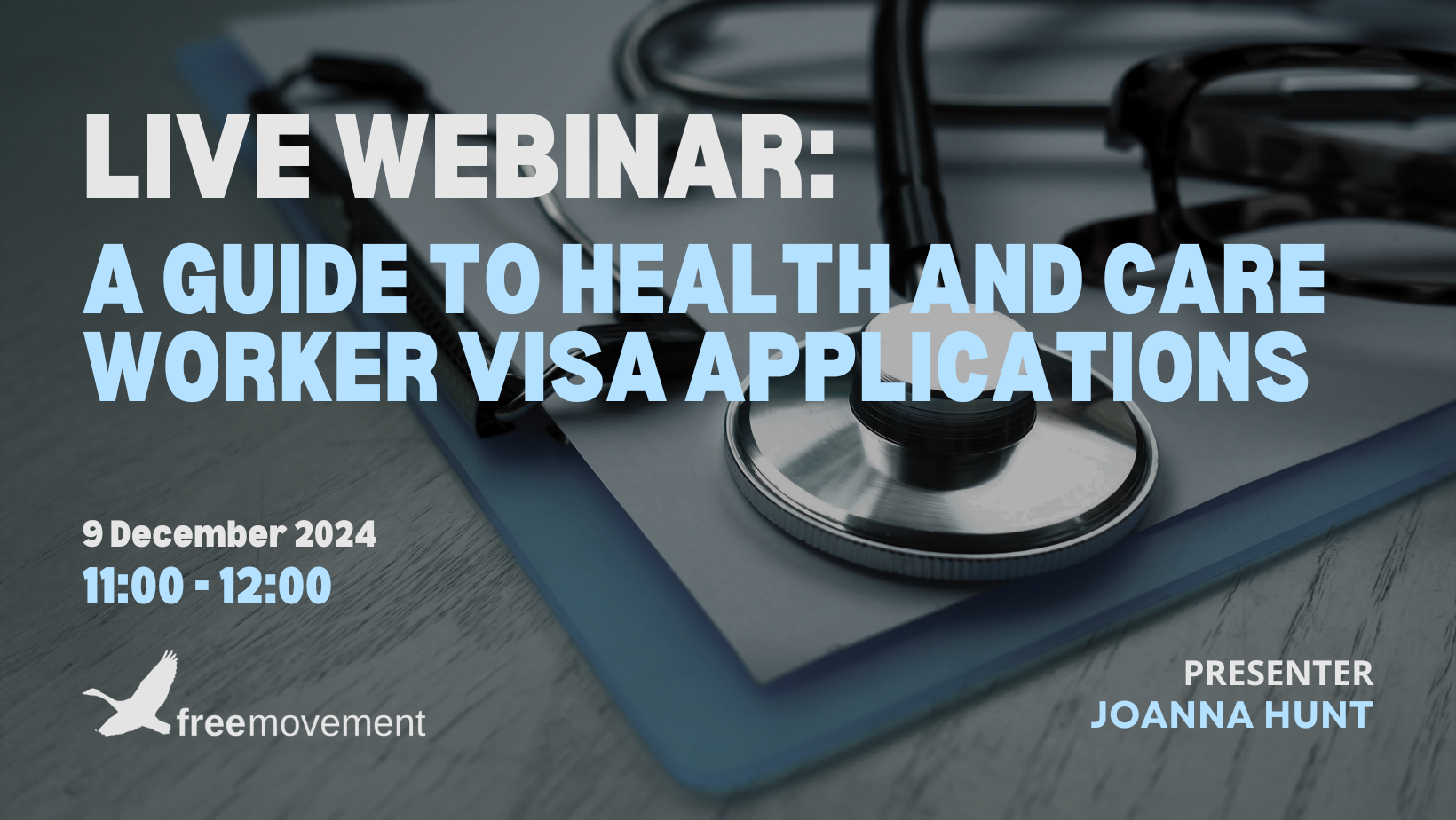One of many adjustments wrought by the Nationality and Borders Act 2022 (keep in mind that?) is an obvious improve in the usual of proof in refugee standing claims. This alteration applies to everybody who utilized for asylum on or after 28 June 2022. There was an enormous ready time for preliminary choices and there’s additionally a rising ready time for appeals. However a few of these asylum claims are lastly beginning to filter by means of to judges.
So, what is likely to be the impact of the change, in idea and in apply?
What was the refugee standing normal of proof earlier than?
Beforehand there was a comparatively easy and simple normal of proof: is there an affordable diploma of probability that the individual in query can be persecuted on their return to their nation of origin? This could possibly be expressed with totally different formulae of phrases. Is there an actual threat of significant hurt? Are there substantial grounds for believing? Is the worry properly based? All of those had been thought of to imply the identical factor.
Precisely what that truly means in actual life is, frankly, not so easy. It can’t be expressed as a share chance. It’s maybe one thing akin to “non-negligible” or “beyond fanciful”. The results of a improper resolution are very, very dangerous, in spite of everything. The individual involved is likely to be tortured or killed. When it comes right down to it, the evaluation might be greatest understood as one that’s socialised into attorneys, decision-makers and judges by means of coaching and expertise. I’ll come again to that time on the finish.
In any occasion, what we do know for sure is that the ‘reasonable degree of likelihood’ take a look at is meant to be lower than the traditional civil normal of the stability of chances. The stability of chances is definitely understood: is one thing extra probably than not? Affordable diploma of chances are much less possible than that.
We additionally know — or knew — that the usual of proof was utilized to every little thing about an asylum declare. Was it fairly probably the individual was telling the reality, that the occasions occurred as claimed, that there’s a threat of sufficiently dangerous issues taking place in future? Within the early days of refugee legislation, some had argued that the civil normal of the stability of chances needs to be utilized to the evaluation of previous info and the cheap diploma of probability simply to the evaluation of future threat. Judges finally held in a case known as Karanakaran that the right strategy was to use the identical normal to every little thing.
The legislation since then had been settled, static and everybody knew what they had been doing.
What’s the refugee standing normal of proof now?
The Nationality and Borders Act 2022 requires decision-makers and judges, when assessing a refugee standing declare, to undertake the cut up strategy that some most popular again within the Nineties.
To begin with, part 32(1) says:
In deciding for the needs of Article 1(A)(2) of the Refugee Conference whether or not an asylum seeker’s worry of persecution is well-founded, the next strategy is to be taken.
So, what follows applies to refugee standing claims. It doesn’t apply to human rights claims primarily based on Article 3 of the European Conference on Human Rights. Neither is there any equal utilized to human rights claims anyplace else within the laws; to impose a unique normal of proof in human rights claims could be incompatible with the very properly established jurisprudence of the European Court docket of Human Rights. Not solely that however it could even be incompatible with all the different human rights conventions, just like the Worldwide Covenant on Civil and Political Rights, the Conference In opposition to Torture and so forth, which comply with the identical strategy.
Part 32(2) then says this:
The choice-maker should first decide, on the stability of chances—
(a) whether or not the asylum seeker has a attribute which might trigger them to worry persecution for causes of race, faith, nationality, membership of a specific social group or political opinion (or has such a attribute attributed to them by an actor of persecution), and
(b) whether or not the asylum seeker does the truth is worry such persecution of their nation of nationality (or in a case the place they don’t have a nationality, the nation of their former recurring residence) on account of that attribute…
If the asylum seeker does have a related attribute and fears persecution, then part 32(4) then says this:
The choice-maker should decide whether or not there’s a cheap probability that, if the asylum seeker had been returned to their nation of nationality (or in a case the place they don’t have a nationality, the nation of their former recurring residence)—
(a) they might be persecuted on account of the attribute talked about in subsection (2)(a), and
(b) they might not be protected as talked about in part 34.
The purpose about this strategy solely making use of in refugee standing claims is strengthened by part 30, which states to whom these elements of the Act apply and for what objective: an any individual, court docket or tribunal figuring out whether or not an individual is a refugee throughout the that means of Article 1(A)(2) of the Refugee Conference.
Do refugees now have to reveal an actual subjective worry?
One other problem arises. Does an individual need to expertise “fear” within the sense of an emotion akin to dread or terror with the intention to be a refugee? Or does “fear” on this context imply apprehension or expectation that one thing might happen? Or is the actual query simply one among goal threat: what is going to actually occur to the individual sooner or later if they’re despatched into that scenario?
This is not going to matter most often. Nevertheless it would possibly matter for kids, those that lack psychological capability or, conceivably, those that are significantly brave. What occurs the place a baby doesn’t perceive the hazard they’re in, for instance? They don’t have any subjective “fear” as such however there would possibly nonetheless be an actual threat of being persecuted.
There are authorities each methods on this query however in apply decision-makers and judges haven’t interrogated the emotional state of the applicant however somewhat the diploma of goal threat. Would possibly the Nationality and Borders Act 2022 power an emotional inquisition?
It would. Part 32(2)(b) requires the decision-maker to evaluate “whether the asylum seeker does in fact fear such persecution in their country of nationality”. Individually, part 32(4) requires the decision-maker then to evaluate whether or not “they would be persecuted as a result”. Separating the assessments is likely to be taken to require separate assessments. If that’s the case, that’s a retrograde step that, in idea, can solely hurt susceptible would-be refugees like youngsters.
It barely issues ultimately. That cut up strategy wouldn’t apply in a parallel human rights declare anyway, which requires an goal evaluation primarily based on threat not subjective emotional state.
Why have a cut up normal of proof which solely applies in refugee standing claims?
I don’t know. I can’t consider any purpose why that is helpful to anybody. It’s a complete waste of everybody’s time. It complicates and slows down decision-making and in authorized phrases achieves no final end result in any way. Anybody denied refugee standing on this strategy ought to succeed on human rights grounds anyway.
On the face of it, what we must always count on is that call makers now need to individually assess refugee standing claims and human rights claims in response to totally different approaches to the usual of proof. That may improve the complexity of the method and the size of written choices. The impact, in idea, could be that some individuals who would in any other case have been recognised as refugees will not be so recognised. However the identical individuals would nonetheless succeed on factually equivalent human rights claims wherein the previous strategy continues to use.
There’s a line of considering that refugee legislation has been rendered primarily redundant by human rights legislation, which applies to all the identical conditions as refugee legislation and a few additional conditions too. In a Venn diagram of safety claims, the circle of refugee legislation claims has arguably already been totally devoured by the human rights one. This growth is grist to that mill. I’m not going to get into that debate right here aside from to say that worldwide refugee legislation does embrace concrete rights for refugees in a approach that worldwide human rights legislation doesn’t.
However within the UK, proper now, there’s primarily no substantive difference between the standing or rights awarded to an individual recognised as a refugee and an individual who succeeds on human rights grounds. So the change to the usual of proof in refugee standing claims makes no actual distinction if the identical individual goes on to succeed on human rights grounds, as they need to. There’s been a lot nonsense in the previous couple of years I’m undecided I’m remembering this appropriately, however at one level I feel the Dwelling Workplace might need determined to make human rights safety much less beneficiant than refugee safety by requiring an extended interval of residence till settlement was achieved. However I feel that was dropped with the abandonment of the ‘differential treatment’ coverage. That coverage was dropped as a result of it merely created extra work for Dwelling Workplace officers, had no deterrent impact and there was the matter of the large asylum backlog to give attention to.
I feel I’m proper in saying that the interval of keep granted is similar, so is the residence interval earlier than qualifying for settlement and so are household reunion rights. It’s tougher for these with human rights safety to get a journey doc for journey overseas.
What is going to actually occur in apply?
We’ve already seen one tribunal case on the brand new strategy in refugee circumstances: JCK v Secretary of State for the Dwelling Division (Botswana)[2024] UKUT 100 (IAC). We did a brief write-up of the case right here: Upper Tribunal gives guidance on assessing well-founded fear under the Nationality and Borders Act. Weirdly, this level in regards to the new normal of proof solely making use of in refugee claims just isn’t made anyplace within the dedication. It didn’t should be as was indirectly related to the choice in query however I ask, rhetorically, when did that ever cease an Higher Tribunal Immigration and Asylum Chamber choose from opining on one thing?
The primary chance is the one I’ve outlined above. Choice-making takes longer however there’s no actual change in outcomes aside from a really small fall in grants of refugee standing matched by an precisely equal small rise in grants of human rights safety. We most likely wouldn’t be capable to see the change within the statistics as a result of (a) it could most likely be small and (b) it could be inconceivable to separate from different elements inflicting a altering grant fee.
The second chance is that everybody principally ignores the substance of the change whereas having additionally to insert some additional paragraphs and reasoning into choices. I can’t think about skilled resolution makers saying to themselves “I’d have granted refugee status on this one previously but now I’m going to deny it even though there’s a real risk what they say happened to them is true”. Not that this could trigger the individual to be despatched again as a result of they’d keep on human rights grounds anyway.
The ultimate and third chance is that the change, whereas legally and theoretically nonsensical, however has an impression on decision-making tradition. The change would possibly properly be a hook from which to hold new coaching and supervision of officers on the Dwelling Workplace. It would result in an injection of extra scepticism. That may result in extra refusals of refugee claims AND human rights claims too. The turnover and likewise growth of employees on the Dwelling Workplace is such that the variety of skilled decision-makers have to be tiny, so the inculcation of a brand new decision-making tradition definitely appears believable.
We’re seeing the grant fee drop in the intervening time. It was at a excessive of 75% however was right down to 66% final time I seemed. Which remains to be excessive, after all. I’ve been rationalising this as an end result from the bringing-forward of excessive grant-rate nationalities to the entrance of the lengthy queue. As soon as all of these are granted, a far greater proportion of decrease grant-rate nationalities stay nonetheless to be determined and we’d subsequently count on the grant fee to fall.
However perhaps, with the speedy growth of decision-makers from 600 to 2,400 and the brand new coaching the brand new officers have obtained, there’s extra occurring than that.
As an apart, rejection of asylum claims creates large extra work for the state. Appeals should be processed, which includes judges, listening to rooms, Dwelling Workplace attorneys and claimant attorneys. Asylum seekers should be supported by means of the attraction course of. In idea, these whose purposes and appeals fail are speculated to be eliminated. Granting standing avoids all of that additional work and expense and would enable the Dwelling Workplace to give attention to different stuff.
That’s simply the Dwelling Workplace, although. It’s far tougher to displace judicial decision-making tradition, which is more likely to be much more sturdy. If that’s the case, and Dwelling Workplace refusals rise, we might count on the attraction grant fee to rise. It’s value keeping track of.







1 Comment